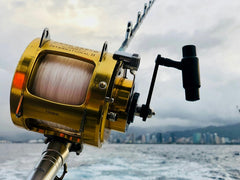Expert Tips: How to Winterize Your Pontoon Boat

If you’re a new pontoon boat owner, you may have enjoyed its versatility and spaciousness over the summer. The pontoon offers a range of benefits for business and pleasure and is a low-maintenance, safe method of water transportation. However, if the winters are swiftly approaching, you may need to take some steps to protect your investment and ensure it's ready for the summers to come. It is prudent to thoroughly understand the process of winterizing a boat while it’s stored during harsher climates to ensure consistent performance. Read on to find out more about the method.
How are Pontoon Boats Different from Regular Boats?
Your pontoon requires a different degree of care than a regular boat. These differences affect how you may winterize the boat and keep up with maintenance and other care. The primary point of difference with a pontoon is the inflatable tubing that supports the boat. While advantageous on water, they accumulate debris and water. This must be frequently checked to prevent damage, especially when preparing for the winter. Pontoons also usually come with many accessories (especially true if you use your pontoon for pleasure activities) that need to be stowed appropriately to prevent damage from the water.

The Process of Boat Winterization
There are some essential components of boat care that you must know to prepare for the winter. The following are some things to keep in mind:
1. Creating Space for Storage
The first step is taking your boat out of the water it is usually docked in. This is important to prevent water damage. If you live in an area where the water freezes during the winter, it is advisable to stow your boat well before the temperature dips below the freezing point. Most pontoon boat owners store their boats on trailers crafted specifically for this task. These keep the boat elevated and dry. If you do not have the equipment to pull your boat out of the water, you may need to consult with professionals for the service.
2. Cleaning the Boat
Before storing your boat, it is necessary to conduct a thorough inspection and cleaning of both its interior and exterior.
Interiors
Get out your deep-cleaning kit and remove all debris and dirt from the boat's interior. It is best to remove all furniture and pontoon boat accessories from the boat before undertaking this task. Use a mild cleaning agent and cloth to wipe away the more persistent stains from the interiors. After cleaning, it is best to let the pontoon air-dry completely. Storing your boat while still damp may cause mold damage.

Exteriors
The exterior of the boat requires special attention while cleaning. It is advisable to thoroughly inspect areas like the hull and propellor for debris like seaweed or barnacles. Make sure to use specialized stripping tools for this purpose. As with the interiors, soap and water (applied with a hard-bristle brush) can aid with the flatter areas. Remember to attend to the pontoons by ensuring the tubing is water-free and completely dry before storage. Grease and lubricate edges for an extra layer of protection. Many owners also add a final layer of polish to keep their boats well-preserved during the season.
3. Equipment and Engine
You will need to maintain the various components of your boat’s system during winterization to ensure optimal performance in the future.
Water SystemsAll water systems must be completely drained before storage. This is a critical step when winterizing a boat, as leftover fluid may freeze and damage it. Open all drainage plugs and use blow-out tools to dry the hard-to-reach areas completely.
Gas TankIt is recommended that you fill your gas tank 3/4ths of the way before adding a gas stabilizer for long-term storage. This removes harmful hydrocarbons from the fuel while reducing the risk of condensation.

Winterize Boat Engine
Depending on the specific model of your pontoon boat, you may have to follow different care instructions before storage. Remember to consult your manual before attempting the winterization process. To protect the engine while it is dormant, it is advisable to spray it with fogging oil. You may also take this opportunity to replace the engine's oil and filters. Drain all of the coolant from your engine and replace it with anti-freeze to prevent damage. This is an essential step.
Most manuals recommend disconnecting the battery and storing it at full charge in a cool and dry area. Periodically charge it throughout the season to maintain its efficiency.
4. Covering the Boat
Pontoons have many accessories and additional components, such as sun shades and bimini tops. These need to be correctly stored along with the boat. Cover your boat with a tarp or cover. You may even employ the help of professional storage facilities. If you are storing your boat outdoors, it is highly advisable to use a shrink-wrap technique. This is the most protective method that will ensure the boat is protected for the winter.
Conclusion
Winterizing a boat is integral for maintenance and durability so that you can enjoy its use when the season changes again. Due to their special components, the winterization process involves specific care for pontoon boats. By cleaning and protecting your entire boat, you can avoid heavy repair costs. Although often extensive, winterization is a task that pays off!
Equip Your Pontoon With the Best at Deep Blue Outdoors!
Whether you’re a seasoned pontoon owner or just beginning to enjoy your boat, Deep Blue Outdoors can help you customize it so you get the most out of it. Pontoons are a popular choice due to the expanded space for specialized gadgets and furniture. Elevate your experience by contacting professionals in the industry today!











